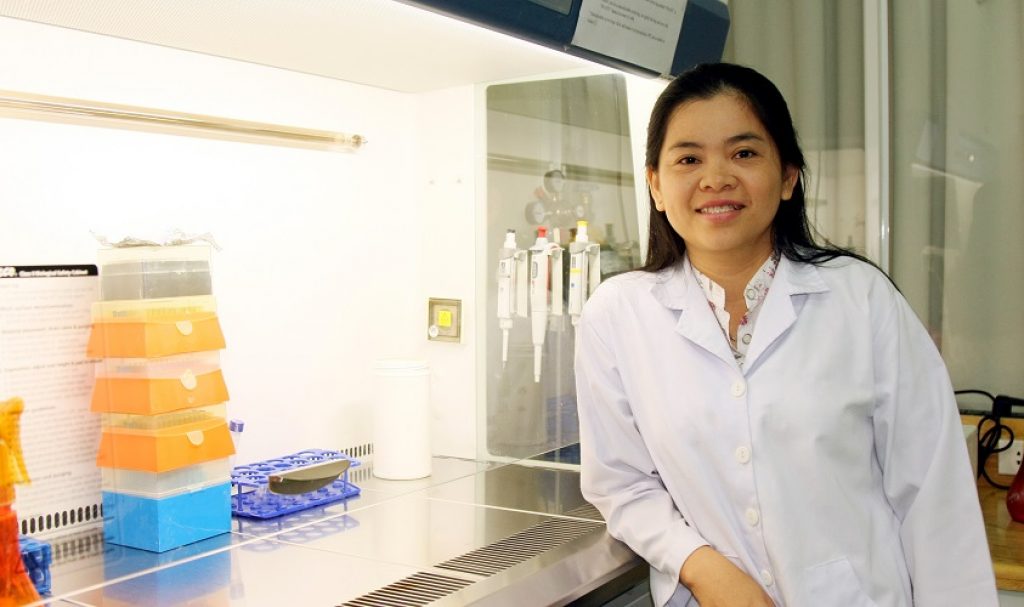Dr. Nguyen Thị Hiep is on a mission to promote tissue engineering and regenerative medicine in her home country of Vietnam.

AsianScientist (Nov. 13, 2018) – Imagine you’re in a remote area—you’ve sustained a wound and cannot get to a hospital in time for stitches. Left open, the wound could bleed excessively or become infected, fast becoming life-threatening. Dr. Nguyen Thị Hiep of Ho Chi Minh City International University, Vietnam, is working on a 21st century first aid kit that could prevent such situations from happening. Leveraging novel biomaterials, she has developed a bio-glue that seals wounds and can even be loaded with living cells or therapeutics. This innovation is part of her bigger agenda to raise the profile and availability of tissue engineering and regenerative medicine (TERM) in her country. For her research achievements, Hiep was recognized as an international rising talent at the 2018 L’Oréal-UNESCO for Women in Science Awards. In this interview with Asian Scientist Magazine, she described some of the challenges she has faced in her research career and outlined her goals for the next decade.
How would you summarize your research in a tweet?
We focus on the fabrication of new biomaterials that can be used in the medical field, with the hope of accelerating the development of new treatments.
Describe a completed research project that you are most proud of.
The project which I am proudest of is a bio-glue made from hyaluronic acid, a naturally occurring protein, and chitosan, a substance found in the skeleton of shellfish. The glue can be used to seal wounds, and can also be loaded with cells or specific ingredients for therapeutics. Currently, we are investigating the ability of the glue to stop bleeding. We are also exploring the oxygen-transfer properties of this glue for other novel applications.
What do you hope to accomplish with your research in the next decade?
Over the next ten years, I plan to produce more types of biomaterials with innovative characteristics. My objective is to create diverse biomaterial sources that can be used in various biomedical contexts. Furthermore, I would like to commercialize my products and provide effective and economical medical treatments for people. I hope to attract more government funding to the public health sector so that medical technology and healthcare services can advance more rapidly. In summary, I wish to reduce the financial burden of disease treatment on patients, which in turn would improve the socio-economic status of my country.
Who (or what) motivated you to go into your field of study? In developed countries, biomaterials and pharmaceutical products have been studied extensively and many of them help improve the welfare of patients and the community. In Vietnam, however, the use of biomaterials to treat diseases remains a new approach. Therefore, I feel that it is my responsibility to pave the way for TERM in my country. I believe that the biomaterials and medicines we develop here in Vietnam are relevant to the global market.
What is the biggest adversity that you experienced in your research?
The biggest adversity I have experienced would be when I established the very first TERM laboratory in Vietnam back in 2012. I had to do this from scratch with no project, no facility and no funding. However, I remained steadfast in my vision to empower my students with fully-equipped, modern labs on par with those in developed countries. I started by organizing many seminars in various universities to introduce the concept of TERM and to seek out talented research students. At that time, we even resorted to borrowing equipment from other universities and institutes, or getting loans from Vietnam National University (VNU) to purchase research apparatus. It was only after laborious efforts in writing and submitting proposals that I finally received grants from several domestic and international sources, such as VNU, the Vietnam Government and the US Navy.
What are the biggest challenges facing the academic research community today, and how can we fix them?
The biggest challenge for researchers is the sacrifices we have to make to dig deep into different aspects of life and find innovative approaches to make life better. As a woman scientist, I have to juggle the demands of my research and academic career while having to raise children and take care of my family, and this requires some degree of sacrifice. Therefore, it is essential that we [scientists] develop time-management and problem-solving skills so that we can function effectively in our different roles and responsibilities.
If you had not become a scientist, what would you have done instead?
Before I was a scientist, I was a teacher. I changed my career once and have never regretted it, so I think being a scientist suits me best.
Outside of work, what do you do to relax?
In my free time, I enjoy shopping, drawing, swimming and reading to my two daughters. My husband and I also make it a point to share our work experiences with each other daily. Other than that, I like gardening—I tend to my own garden and visit my parents’ garden occasionally.
If you had the power and resources to eradicate any world problem using your research, which one would you solve?
I think water and food pollution are among the worst problems facing our generation. What advice would you give to aspiring researchers in Asia? Follow your dream and pursue it. Life is like a tale—it’s not about how long the story is, but how good it is as it unfurls.



